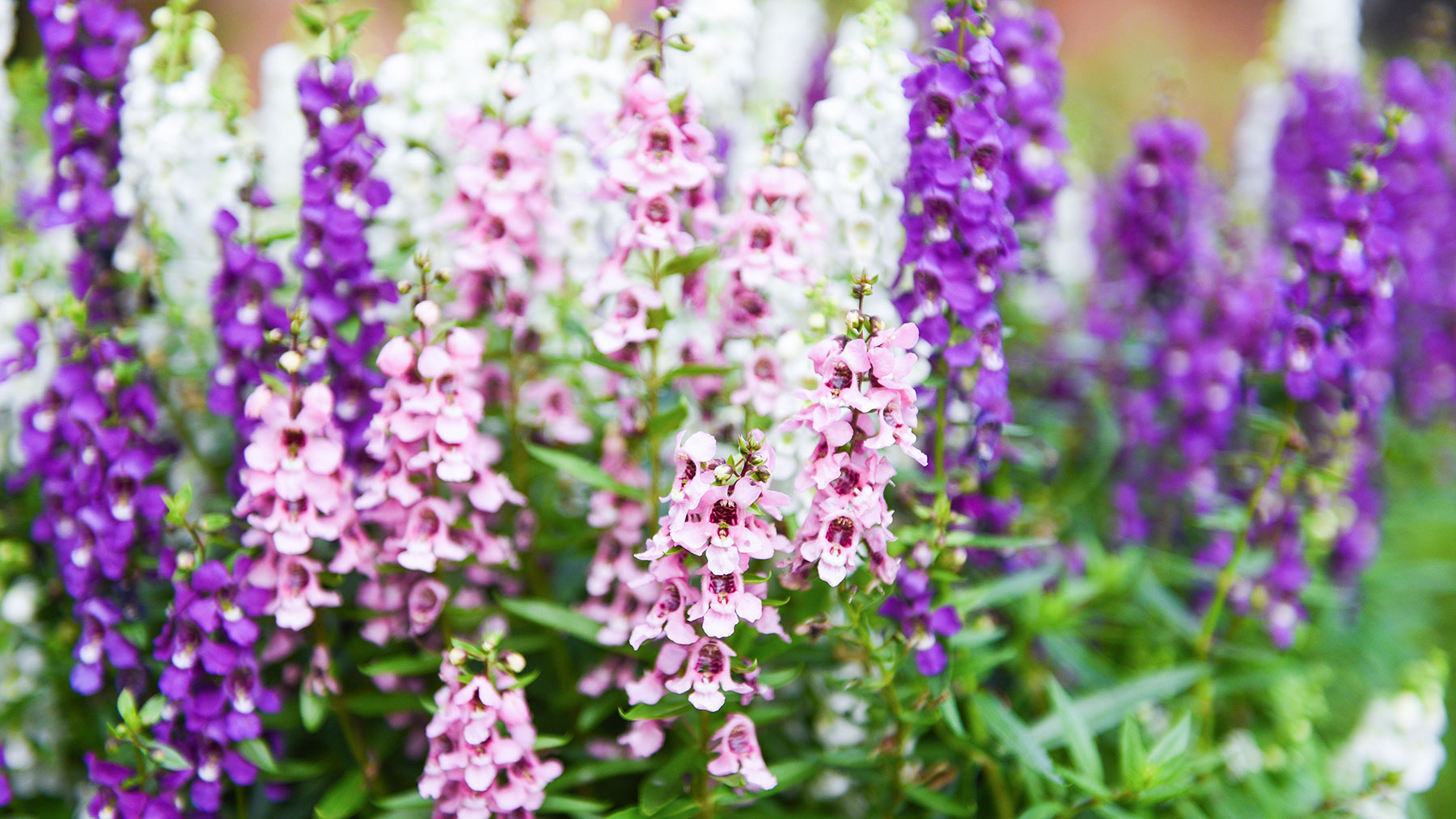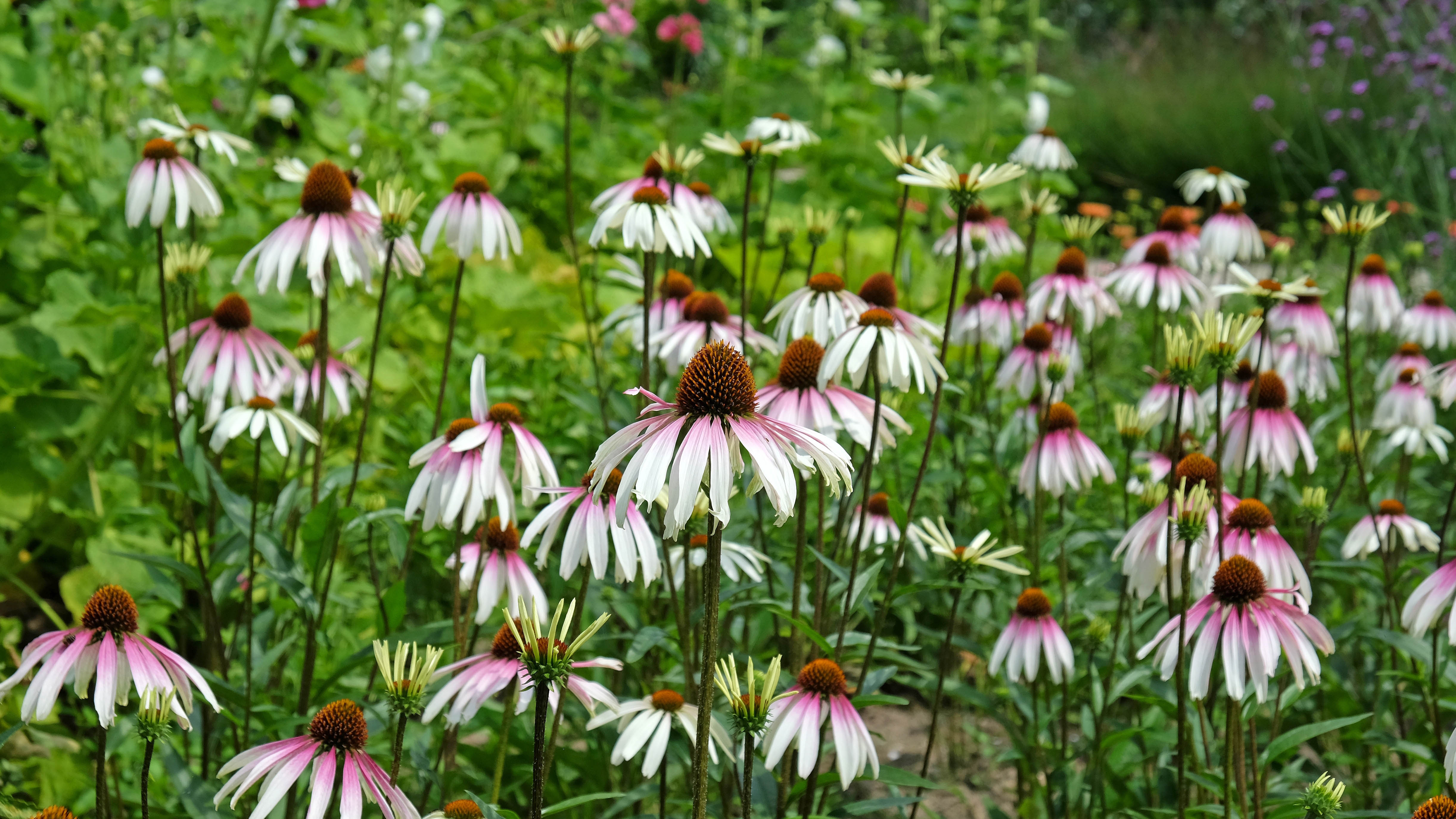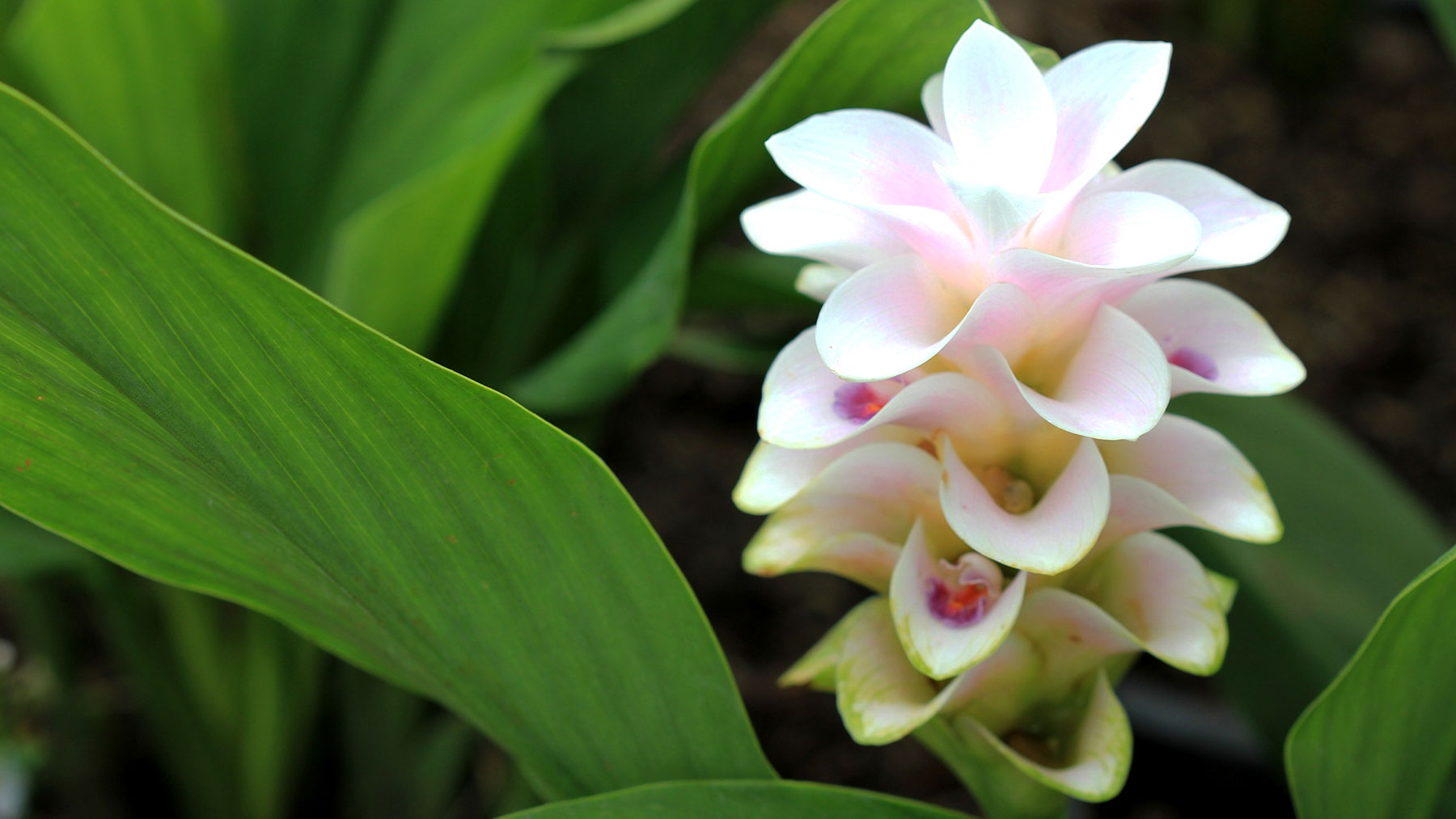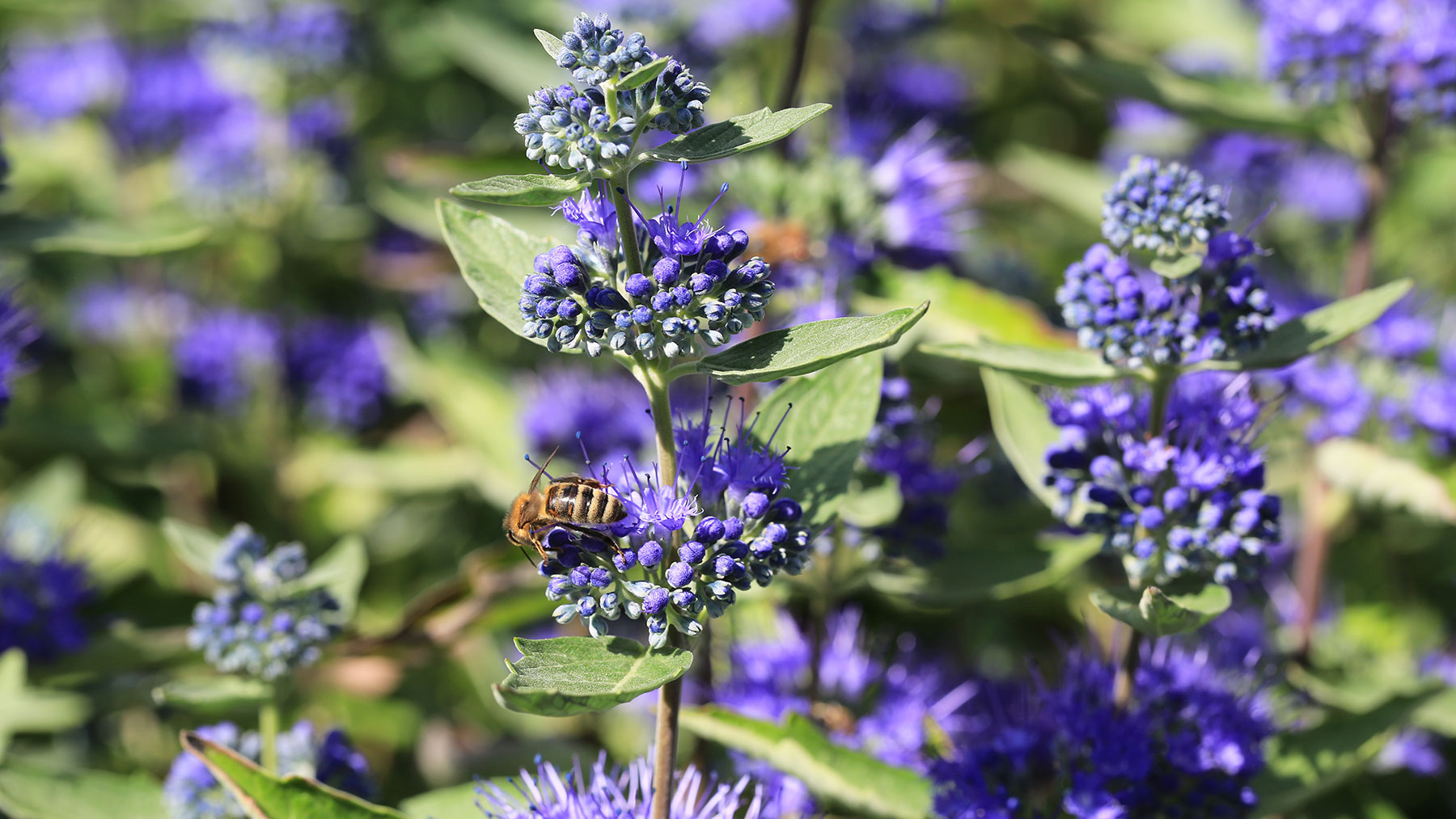
As summer gets ever closer and we start to spend more time outdoors, it’s the perfect time to get your garden summer-ready. Apart from cleaning your patio before you can enjoy cooking up a feast on one of the best grills, there’s plenty you can do to add a pop of color to your flower beds — and no, it's not too late.
So, whether you’ve got a small backyard and rely on container planting or a large patch with plenty of flower borders, there’s a wealth of flowering plants to brighten up your outside space.
We spoke to two garden experts who share their top 5 plants to add to your garden this June. We've also noted which gardening zones they work best in, so all you need to do is grab your gardening gloves and get planting.
1. Coneflower

Coneflower, also known as Echinacea, is a beautifully bold and bright flower. Justin Hancock, horticulturist at Costa Farms, says this North American native perennial is tough enough to be planted from spring to autumn.
It will also bring wildlife into your garden, with Hancock adding, “It shows off a regular supply of pink, red, orange, or yellow flowers (some varieties are fragrant) that are a favorite of butterflies.”
There’s also flexibility in the flowers you choose. “Single varieties give you the classic daisy-like look, but double-flowering varieties add even more color and interest to the garden.”
Coneflowers are also sun lovers, and for optimum blooms, Hancock suggests planting them where they’ll get at least six to eight hours of direct sunlight a day.
But although coneflowers need plenty of sunlight, they’re not so fussy about soil. “They tolerate a wide range of soil types,” says Hancock, “so you can plant them just about anywhere and enjoy low-maintenance beauty.”
Hancock adds that once the plant is established, it will tolerate drought, “but you’ll find it looks and grows best when watered regularly.”
Aileen Carroll, professional gardener and manager at Van Windens garden center in California, says it’s possible to make more of the plant once it’s established by dividing it into clumps every three to four years. And apart from looking stunning in a flower bed, she says, “Echinacea works well in a pot and is a wonderful cut flower.”
Planting Zones
Does best in Zones 3-8 (depending on variety).
Grown as an annual elsewhere
2. Mandevilla

Add a touch of the tropics to your backyard with a Mandevilla. This flowering vine has trumpet-like flowers with a showy appeal and comes in an array of colors, with glossy green leaves.
If you’re looking for a low-maintenance plant, it’s one that Hancock recommends, as it’s “a surefire bet for enjoying a lot of easy-care color throughout the summer, no matter how hot it gets”. It’s also popular with butterflies and hummingbirds but is resistant to deer and rabbits.
Whether you want to go bright and bold or soft and pastel, there is a Mandevilla for you. “This plant is adorned with star-shaped blossoms in shades of pink, red, and white, with newer varieties in peachy and yellow tones,” says Hancock.
However, Carroll explains it is treated differently depending on where you live. It’s considered a perennial in milder regions, whereas in cooler climes, where the temperature drops to the 30°s or below in winter, it’s regarded as an annual.
Like coneflowers, Hancock says it loves the sun, and its blooms will do best when it gets at least eight hours of sunlight daily. It’s also not too fussy about soil. “You can grow it in just about any ground, although if you have really heavy clay, planting it in a raised bed or with some extra organic matter can help prevent root issues if it stays too wet.”
Once it gets established, it’s drought tolerant, although Hancock suggests giving it a weekly water.
If you have a vining Mandevilla, you’ll need to add some support using trellis, stakes, or wires for it to climb on.
What to try
Carroll recommends Mandevilla laxa, “It’s a wonderfully gardenia-scented vine that tops out at just 15 feet,” she says.
Planting Zones
Grown as a perennial in Zones 9 to 11
Grown as an annual elsewhere
3. Angelonia

Hancock describes Angelonia as a “heat-loving, summer-flowering beauty” and says June is the perfect time for planting, “especially if your cool-season spring annuals like Pansy, Osteospermum, or Sweet Alyssum are starting to fade in the heat.”
Bees and butterflies love its spikes of blue, purple, pink, or white flowers, which resemble those of snapdragons. It works well when planted in containers, beds, and borders. The flowers are also fragrant, and the sweet scent is often compared to grapes or vanilla.
“It does best in a sunny spot,” says Hancock, “where it gets at least six hours of direct sun per day.” It also prefers a well-draining soil, although he adds, “It can adapt to a wide range of soil types, from sand to clay.”
Once established, Angelonia holds up to drought, but Hancock adds, “It grows and flowers best if watered regularly, but tolerates dry stretches like a champ.”
Planting Zones
Grown as an perennial in Zones 9 and above
Grown as an annual elsewhere
4. Curcuma

If you’re looking for a flower with the wow factor, the Curcuma could be the one for you. It’s a beautifully exotic bloom with an orchid-like appeal. Hancock describes it as a “subtropical beauty” showing “sculptural pink, purple or white pinecones that rise above the foliage”.
One of the many reasons to love Curcuma is its long flowering period, you’ll be able to enjoy its beauty throughout the summer and autumn.
Curcuma is a versatile plant that adapts well to different regions. In the North, it thrives in full sun. In Central and Southern areas, Hancock suggests a balance of morning sun and afternoon shade or even dappled shade throughout the day.
“Curcuma does best in moist, well-drained soil that’s rich in organic matter, but tolerates a range of soils, including sandy ones,” he advises. He also recommends watering it once the top couple of inches of soil becomes dry and warns, “If it dries out too much, it may protest by dropping flower buds.”
Planting Zones
Grown as a perennial in Zones 9-11
Grown as an annual elsewhere
5. Caryopteris

Caryopteris is more commonly known as Bluebeard. As its name suggests, it has clusters of blue flowers, ranging from powder blue to deep violet-blue, that form along its stems. Like its blooms, the leaves are delicate and either gray-green, silver, golden, or variegated in color.
Carroll says you can expect Caryopteris to bloom from midsummer until the frosty weather hits, with some flowering until mid-fall.
When planted, it prefers a sunny spot that receives at least six hours of direct sun daily. If planted in a shady position, it won’t bloom as well. It also thrives in dry areas and, once established, requires little water to survive. However, Carroll mentions that it does require good drainage, “so if you have clay soil consider planting it on a bit of a mound”.
Carroll recommends pruning “them low before spring rolls around and letting them flush out” while “deadheading will encourage new flowers.”
A Caryopteris is a good choice if you are new to gardening. It’s easy to grow and maintain, and its compact shape makes it perfect for small gardens and containers.







